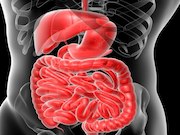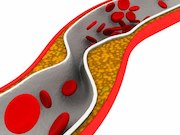Tag: Diabetes: Type II
Lower Energy Consumption for South Asian Migrants With T2DM
Compared to those without T2DM, SAs with T2DM consume less total energy, less of many nutrients
Intensive Lifestyle Interventions Cut Long-Term Disability in T2DM
10-year lifestyle, weight loss changes increased disability-free years in women, those without CVD
Dipeptidyl Peptidase-4 Inhibitors in T2DM Linked to IBD
Higher risk of inflammatory bowel disease with longer use of dipeptidyl peptidase-4 inhibitor
Oxyntomodulin Augments Glucose Homeostasis
OXM effects seen in obese patients with and without T2DM; comparable effects to liraglutide in T2DM
Grilled Meat, Chicken Ups Risk of Type 2 Diabetes in U.S. Adults
Using open flames or high temps to cook red meat, chicken both linked to higher risk of T2DM
Improved Glycemic Control With Surgical Tx of Obesity in Teens
Adolescents with T2DM have improved glycemic control, weight loss after surgery vs. medical therapy
Few U.S. Adults Meet Most T2DM Risk Reduction Goals
Overall, 21, 29, and 13 percent meet goals for fruit, vegetable, and dairy intake, respectively
ACP Updates Guidance for HbA1c Targets for Adults With T2DM
Clinicians should personalize glycemic control goals; aim for HbA1c of 7 to 8 percent for most adults
Leptin Tied to Sleep Quality in Obese Patients With T2DM
Leptin tied to delta power in 1st sleep cycle, not total sleep time; findings not seen in non-obese patients
Treatment Effect of Fenofibrate Varies in Patients With T2DM
Treatment effect is greater in patients with dyslipidemia; absolute risk reduction of 2.15 percent














